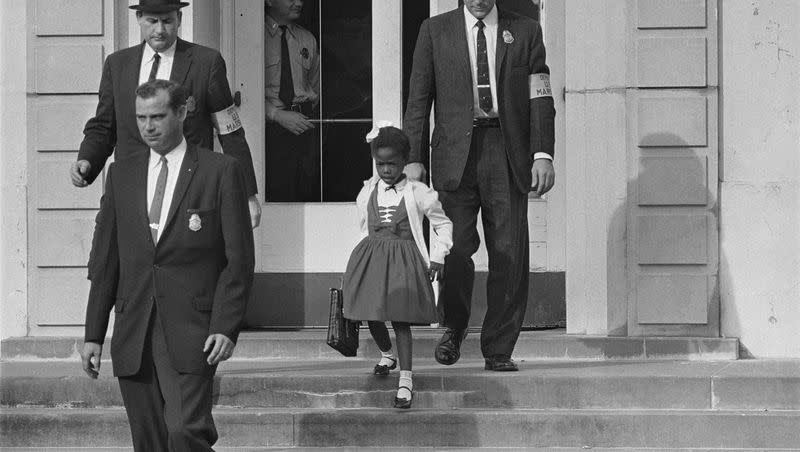63 years ago, Ruby Bridges made history as the first African American child to attend an all-white public school

- Oops!Something went wrong.Please try again later.
Ruby Bridges was born on Sept. 8, 1954, which coincidentally was the same year in which the Supreme Court ruled in the case of Brown v. Board of Education to end segregation in public schools.
She would just six years later make history as the first African American child to desegregate her school on Nov. 14, 1960.
Here’s exactly how the decision was made for her to do this.
How was it decided that Ruby Bridges would be first?
Five years after the initial decision of Brown v. Board of Education in 1954, Bridges was selected to take a test to determine whether or not she would attend an all-white school, according to Hilbert College.
Bridges was reportedly one of six students to pass the exam and was given the option to receive an education at an all-white elementary school.
The National Women’s History Museum reported that her father was fearful for his daughter’s safety if she were to attend the all-white William Frantz Elementary School, which was “a few blocks from their home.”
Her mother was reportedly supportive of Ruby attending so that she could have the “educational opportunities that her parents had been denied.”
The museum further reported that the school district had delayed her admittance until Nov. 14.
Related
What was the response to Ruby Bridges?
The Guardian described the images of Bridges’s first day of school as “a study in vulnerability: a tiny girl in her smart new uniform, with white socks and white ribbons in her hair, flanked by four huge federal agents in suits.”
Protesters reportedly surrounded the school gates with hostility in their words and actions as “they yelled names and racial slurs, chanted and waved placards.”
Biography reported that Bridges, “in her innocence, first believed it was like a Mardi Gras celebration.”
Bridges reportedly endured threats of being poisoned and was confronted by a woman who held a Black doll in a wooden coffin. Parents pulled their children from her class to the point that she was the only student left.
Only one teacher, Barbara Henry, volunteered to teach Bridges and was described as being responsible for creating “a safe haven for Ruby at school — and taught her every subject alone. Despite the masses against them, they had a good year.”
An Untold History video detailed that “Barbara Henry’s determination and Ruby’s fortitude became an inspiration to other Black families who eventually began to enroll their children too.”
Related
Where is Ruby Bridges today?
Since her courageous steps into school 63 years ago, Bridges continues to work as a civil rights activist and founded The Ruby Bridges Foundation, which aims to “offer programs and resources to guide and support younger generations on their pathway toward a more peaceful and harmonious future.”
Britannica reported that since receiving her education, she has also become a mother, worked as a travel agent and since 1993 has been working as a parent liaison at William Frantz Elementary School, where her mark in U.S. history began.
Bridges reportedly said in regards to her life’s work, “My message is really that racism has no place in the hearts and minds of our children.”

